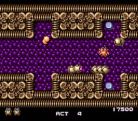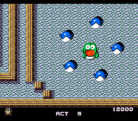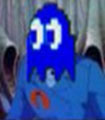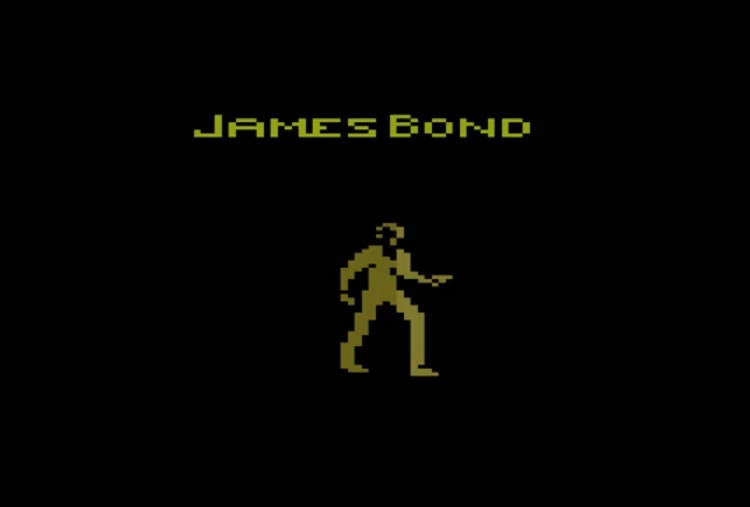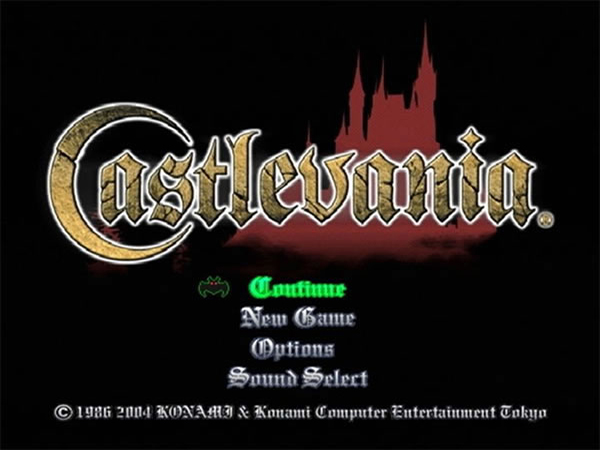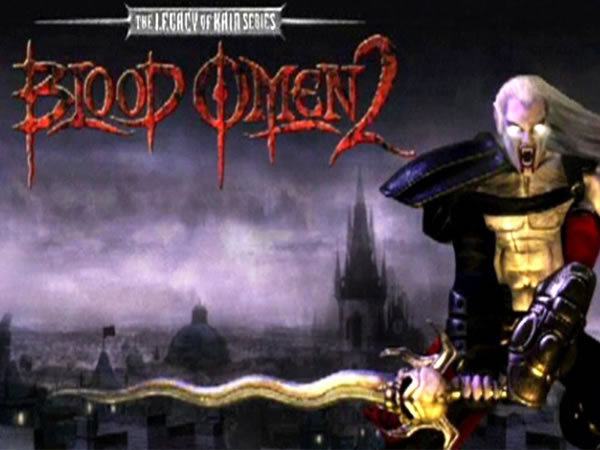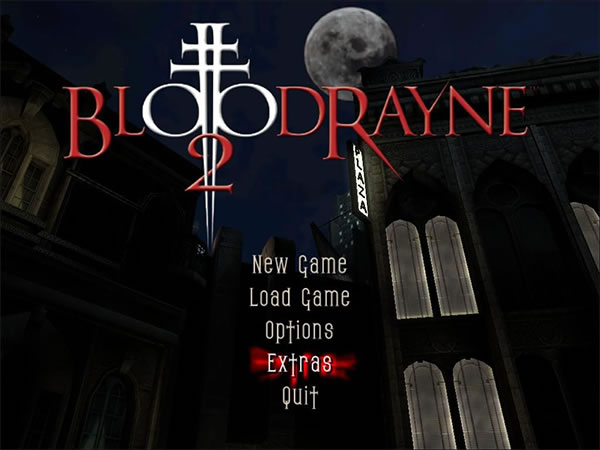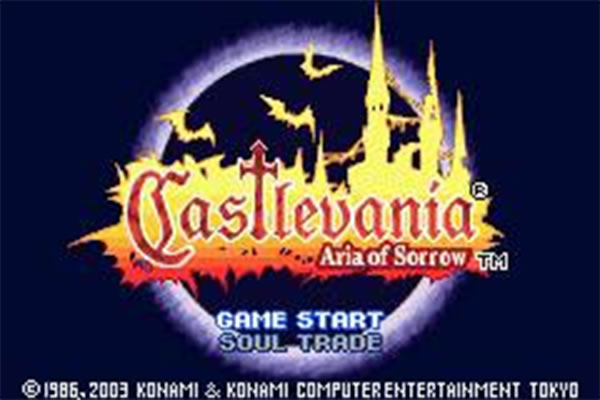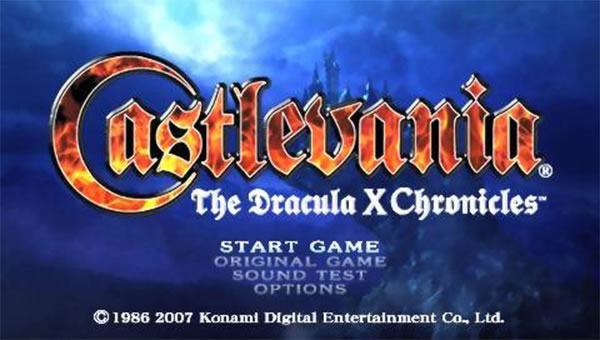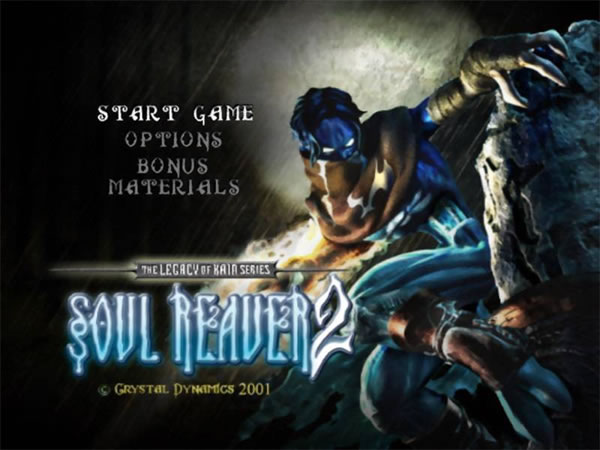- CLASSIC MAGAZINES
- REVIEW CREW
A show recapping what critics thought back
when classic games first came out! - NEXT GENERATION'S BEST & WORST
From the worst 1-star reviews to the best
5-stars can offer, this is Next Generation! - NINTENDO POWER (ARCHIVE)
Experience a variety of shows looking at the
often baffling history of Nintendo Power! - MAGAZINE RETROSPECTIVE
We're looking at the absolutely true history of
some of the most iconic game magazines ever! - SUPER PLAY'S TOP 600
The longest and most ambitious Super NES
countdown on the internet! - THEY SAID WHAT?
Debunking predictions and gossip found
in classic video game magazines! - NEXT GENERATION UNCOVERED
Cyril is back in this spin-off series, featuring the
cover critic review the art of Next Generation! - HARDCORE GAMER MAGAZING (PDF ISSUES)
Download all 36 issues of Hardcore Gamer
Magazine and relive the fun in PDF form!
- REVIEW CREW
- ELECTRONIC GAMING MONTHLY
- ELECTRONIC GAMING MONTHLY RANKS
From Mario to Sonic to Street Fighter, EGM
ranks classic game franchises and consoles! - ELECTRONIC GAMING MONTHLY BEST & WORST
Counting down EGM’s best and worst reviews
going year by year, from 1989 – 2009! - ELECTRONIC GAMING BEST & WORST AWARDS
11-part video series chronicling the ups and
downs of EGM’s Best & Worst Awards!
- ELECTRONIC GAMING MONTHLY RANKS
- GAME HISTORY
- GAME OVER: STORY BREAKDOWNS
Long-running series breaking down game
stories and analyzing their endings! - A BRIEF HISTORY OF GAMING w/ [NAME HERE]
Real history presented in a fun and pithy
format from a variety of game historians! - THE BLACK SHEEP
A series looking back at the black sheep
entries in popular game franchises! - INSTANT EXPERT
Everything you could possibly want to know
about a wide variety of gaming topics! - FREEZE FRAME
When something familiar happens in the games
industry, we're there to take a picture! - I'VE GOT YOUR NUMBER
Learn real video game history through a series
of number-themed episodes, starting at zero! - GREAT MOMENTS IN BAD ACTING
A joyous celebration of some of gaming's
absolute worst voice acting!
- GAME OVER: STORY BREAKDOWNS
- POPULAR SHOWS
- DG NEWS w/ LORNE RISELEY
Newsman Lorne Riseley hosts a regular
series looking at the hottest gaming news! - REVIEW REWIND
Cyril replays a game he reviewed 10+ years
ago to see if he got it right or wrong! - ON-RUNNING FEUDS
Defunct Games' longest-running show, with
editorials, observations and other fun oddities! - DEFUNCT GAMES QUIZ (ARCHIVE)
From online quizzes to game shows, we're
putting your video game knowledge to the test!- QUIZ: ONLINE PASS
Take a weekly quiz to see how well you know
the news and current gaming events! - QUIZ: KNOW THE GAME
One-on-one quiz show where contestants
find out if they actually know classic games! - QUIZ: THE LEADERBOARD
Can you guess the game based on the classic
review? Find out with The Leaderboard!
- QUIZ: ONLINE PASS
- DEFUNCT GAMES VS.
Cyril and the Defunct Games staff isn't afraid
to choose their favorite games and more! - CYRIL READS WORLDS OF POWER
Defunct Games recreates classic game
novelizations through the audio book format!
- DG NEWS w/ LORNE RISELEY
- COMEDY
- GAME EXPECTANCY
How long will your favorite hero live? We crunch
the numbers in this series about dying! - VIDEO GAME ADVICE
Famous game characters answer real personal
advice questions with a humorous slant! - FAKE GAMES: GUERILLA SCRAPBOOK
A long-running series about fake games and
the people who love them (covers included)! - WORST GAME EVER
A contest that attempts to create the worst
video game ever made, complete with covers! - LEVEL 1 STORIES
Literature based on the first stages of some
of your favorite classic video games! - THE COVER CRITIC
One of Defunct Games' earliest shows, Cover
Critic digs up some of the worst box art ever! - COMMERCIAL BREAK
Take a trip through some of the best and
worst video game advertisements of all time! - COMIC BOOK MODS
You've never seen comics like this before.
A curious mix of rewritten video game comics!
- GAME EXPECTANCY
- SERIES ARCHIVE
- NINTENDO SWITCH ONLINE ARCHIVE
A regularly-updated list of every Nintendo
Switch Online release, plus links to review! - PLAYSTATION PLUS CLASSIC ARCHIVE
A comprehensive list of every PlayStation
Plus classic release, including links! - RETRO-BIT PUBLISHING ARCHIVE
A regularly-updated list of every Retro-Bit
game released! - REVIEW MARATHONS w/ ADAM WALLACE
Join critic Adam Wallace as he takes us on a
classic review marathon with different themes!- DEFUNCT GAMES GOLF CLUB
Adam Wallace takes to the links to slice his way
through 72 classic golf game reviews! - 007 IN PIXELS
Adam Wallace takes on the world's greatest spy
as he reviews 15 weeks of James Bond games! - A SALUTE TO VAMPIRES
Adam Wallace is sinking his teeth into a series
covering Castlevania, BloodRayne and more! - CAPCOM'S CURSE
Adam Wallace is celebrating 13 days of Halloween
with a line-up of Capcom's scariest games! - THE FALL OF SUPERMAN
Adam Wallace is a man of steel for playing
some of the absolute worst Superman games! - THE 31 GAMES OF HALLOWEEN
Adam Wallace spends every day of October afraid
as he reviews some of the scariest games ever! - 12 WEEKS OF STAR TREK
Adam Wallace boldly goes where no critic has
gone before in this Star Trek marathon!
- DEFUNCT GAMES GOLF CLUB
- DAYS OF CHRISTMAS (ARCHIVE)
Annual holiday series with themed-episodes
that date all the way back to 2001!- 2015: 30 Ridiculous Retro Rumors
- 2014: 29 Magazines of Christmas
- 2013: 29 Questionable Power-Ups of Christmas
- 2012: 34 Theme Songs of Christmas
- 2011: 32 Game Endings of Christmas
- 2010: 31 Bonus Levels of Christmas
- 2009: 30 Genres of Christmas
- 2008: 29 Controls of Christmas
- 2007: 34 Cliches of Christmas
- 2006: 33 Consoles of Christmas
- 2005: 32 Articles of Christmas
- 2004: 31 Websites of Christmas
- 2003: 29 Issues of Christmas
- 2002: 28 Years of Christmas
- 2001: 33 Days of Christmas
- NINTENDO SWITCH ONLINE ARCHIVE
- REVIEW ARCHIVE
- FULL ARCHIVE
Gomola Speed
Though a little-known monster from the beloved Japanese television series Ultraman was named "Gomola," the protagonist of Gomola Speed does not resemble a city-crushing lizard with horns. Rather, the game developers likely borrowed "gomola" from the Polish word for "round" and this is appropriate because "Gorm," our worm-like hero, is not only made up of segmented spheres, but must circle itself like an ouroboros (mythical snake that eats its own tail) in order to eliminate enemies and capture certain items.
Like most addictive games, the premise seems simple. Find pellets, ingest them by circling your body around them, and then exit the level with your entire body intact. Part of the challenge lies in actually finding the segments of your body since they are scattered across the various playing fields. The shorter you are, the harder it is to circle enemies and pellets. You start each level as just the head - the vital part of your body - and when it is touched by an enemy or a bomb blast, you lose a life. If any other part of your body is hit, the affected spheres simply fall off and scatter, leaving you to scramble to recover them. Ironically, sometimes it's strategically advantageous to stay small, making you a less conspicuous target. The "II" button speeds you up, and the "I" drops timed grenades from your tail. Timing your bombs is key as their repercussion can harm you as well as your foes. When an enemy is temporarily stunned by a bomb, you may circle him for points, but in a few moments, it will regenerate, faster and smarter than before. Sometimes its best to live and let live.
While you can get away with passively skirting most enemies, there are intermittent bosses throughout that must be eliminated in order to advance. These bosses will remind you that you're not playing a simple puzzler, but rather an overhead dungeon crawler. And then after playing through a few more acts, you realize that this game defies classification and that you're okay with that.
If the gameplay described above seems confusing, you'll be glad to know that Gomola Speed provides an in-game tutorial (years before such things became vogue; back in the 1990s one used to have to read instruction manuals). And luckily, for all us yahoos not willing to learn Japanese, the entire text of the game is in English! Whenever you make a successful maneuver, a textbox lets you know what you had just done, which seems backwards, but it's appreciated nonetheless. So, play around with the controller and you'll eventually do something right and have it confirmed by the PC Engine. Easy-to-understand pictographs activated by touching golden genie lamps also help you find solutions during the larger levels.
Crisp graphics, quick sprites, diverse levels, and its blend of genres makes Gomola Speed a sound buy for PC Engine enthusiasts. It will frustrate at points, but not to point of discouraging one from finishing all twenty-five acts. Short saves code and three continue credits make finishing the game feasible, but there are no save codes for the last five levels. (Be sure to stock up on lives in Act 21!)
Like most addictive games, the premise seems simple. Find pellets, ingest them by circling your body around them, and then exit the level with your entire body intact. Part of the challenge lies in actually finding the segments of your body since they are scattered across the various playing fields. The shorter you are, the harder it is to circle enemies and pellets. You start each level as just the head - the vital part of your body - and when it is touched by an enemy or a bomb blast, you lose a life. If any other part of your body is hit, the affected spheres simply fall off and scatter, leaving you to scramble to recover them. Ironically, sometimes it's strategically advantageous to stay small, making you a less conspicuous target. The "II" button speeds you up, and the "I" drops timed grenades from your tail. Timing your bombs is key as their repercussion can harm you as well as your foes. When an enemy is temporarily stunned by a bomb, you may circle him for points, but in a few moments, it will regenerate, faster and smarter than before. Sometimes its best to live and let live.
While you can get away with passively skirting most enemies, there are intermittent bosses throughout that must be eliminated in order to advance. These bosses will remind you that you're not playing a simple puzzler, but rather an overhead dungeon crawler. And then after playing through a few more acts, you realize that this game defies classification and that you're okay with that.
If the gameplay described above seems confusing, you'll be glad to know that Gomola Speed provides an in-game tutorial (years before such things became vogue; back in the 1990s one used to have to read instruction manuals). And luckily, for all us yahoos not willing to learn Japanese, the entire text of the game is in English! Whenever you make a successful maneuver, a textbox lets you know what you had just done, which seems backwards, but it's appreciated nonetheless. So, play around with the controller and you'll eventually do something right and have it confirmed by the PC Engine. Easy-to-understand pictographs activated by touching golden genie lamps also help you find solutions during the larger levels.
Crisp graphics, quick sprites, diverse levels, and its blend of genres makes Gomola Speed a sound buy for PC Engine enthusiasts. It will frustrate at points, but not to point of discouraging one from finishing all twenty-five acts. Short saves code and three continue credits make finishing the game feasible, but there are no save codes for the last five levels. (Be sure to stock up on lives in Act 21!)
HOME |
CONTACT |
NOW HIRING |
WHAT IS DEFUNCT GAMES? |
NINTENDO SWITCH ONLINE |
RETRO-BIT PUBLISHING
Retro-Bit |
Switch Planet |
The Halcyon Show |
Same Name, Different Game |
Dragnix |
Press the Buttons
Game Zone Online | Hardcore Gamer | The Dreamcast Junkyard | Video Game Blogger
Dr Strife | Games For Lunch | Mondo Cool Cast | Boxed Pixels | Sega CD Universe | Gaming Trend
Game Zone Online | Hardcore Gamer | The Dreamcast Junkyard | Video Game Blogger
Dr Strife | Games For Lunch | Mondo Cool Cast | Boxed Pixels | Sega CD Universe | Gaming Trend
Copyright © 2001-2025 Defunct Games
All rights reserved. All trademarks are properties of their respective owners.
All rights reserved. All trademarks are properties of their respective owners.






